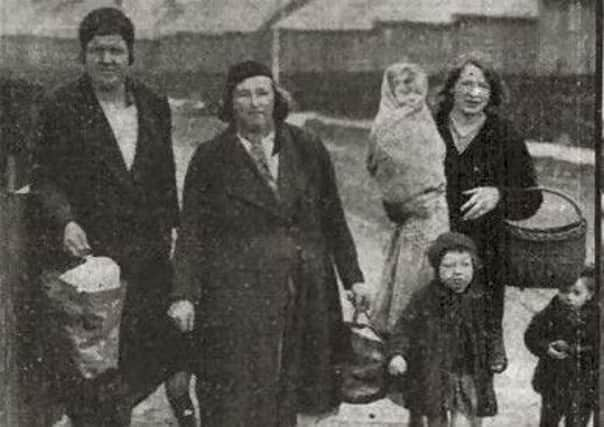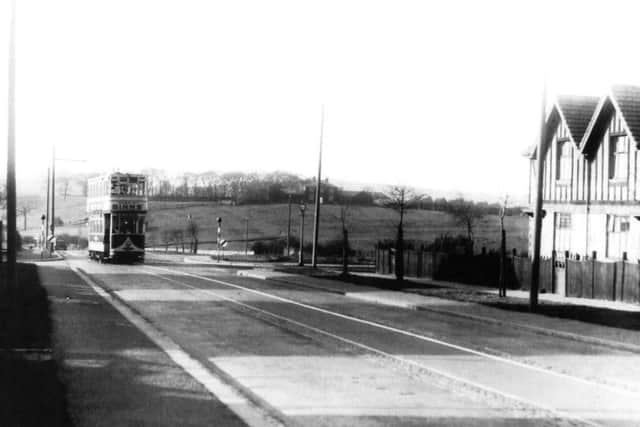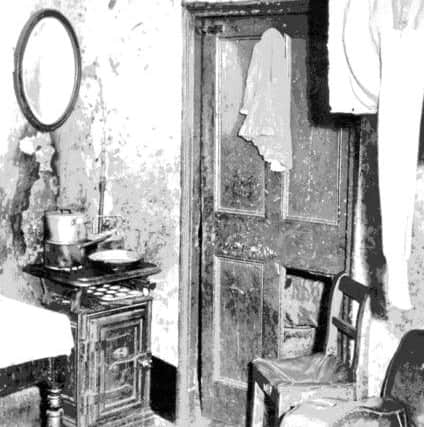Goodbye to outdoor netties, single taps and grimy clothes as new Sunderland estates were built


And usually it is far away from the hurly burly and grime of city living.
It was no different in Sunderland where thousands of people were wishing for better times.


Advertisement
Hide AdAdvertisement
Hide AdTheir dream of a better life came true in 1935 and what a difference it made – eventually.
That year, the occupants of Ayre’s Quay were involved in a mass exodus from streets like Crescent Row and Johnson Street.
The excited locals headed off to the beautiful and idyllic surroundings of – Plains Farm.
But what was Plains Farm like?


And how did it compare to the neighbourhood that thousands of people left behind.
Advertisement
Hide AdAdvertisement
Hide AdChris Cordner provides this report, compiled with the invaluable help of the Sunderland Antiquarian Society.
For Ayres Quay residents like Sophia Wilson, the demolition of slum dwellings was a dream come trure.
So was the prospect of renting a brand new council house and the facilities which came with it.


Sophia’s story was a typical one of many Sunderland resident, of life in a rundown part of the city.
Advertisement
Hide AdAdvertisement
Hide AdHer South Johnson Street home had been built during the early years of Queen Victoria’s reign. And right through to the 1930s, life there had changed little from those far-off days.
Picture the scene of an era gone by.
* Families still queued to use a single tap in the back yard.


* Outside netties were the only form of sanitation.
* And half a dozen families would be packed into a two- bedroom terrace that was designed for a mum, dad and a couple of children.
So when the bulldozers moved in and compulsory purchase orders made, Plains Farm Housing Estate grew on what had once been rolling fields.
Advertisement
Hide AdAdvertisement
Hide AdMrs Wilson, her husband and four children packed up their few belongings and, in 1938, settled into their new home in Primate Road.
When an Echo reporter visited the estate a few months later, over a thousand Ayre’s Quay folk had taken up residence.
And while the general consensus was that life was good, there were still a few gripes. The Plains Farm ladies certainly made their feelings very clear.
Mrs Wilson complained that it was costing her a fortune – two shillings – to send her four youngsters all the way to St. Mary’s School in Chester Road, because there was no school nearby.
Advertisement
Hide AdAdvertisement
Hide AdSophia was not the only one who had moved and still had reason to gripe.
Mrs Burnikel and her friends were interviewed as well, as they returned from a shopping trip to the Royalty.
All complained that the estate badly needed shops and a clinic.
“It cost me sixpence to take the bairn to see the doctor in Deptford,” one of the ladies moaned.
Advertisement
Hide AdAdvertisement
Hide AdBut, shops and medical needs aside, there was one thing that everyone agreed with.
When you did your clothes washing, it dried the clothes in pristine condition.
When the washing dried, it was still white up on Plains Farm Estate.
Ethel Hardy, from Plymouth Square, was pictured proudly in the Echo hanging out a line full of gleaming white sheets.
Advertisement
Hide AdAdvertisement
Hide Ad“Down on Ayre’s Quay it was a waste of time putting washing out,” she moaned. “But this clean air gives a housewife real pride in her work.”
The biggest smile was pictured on the face of 14-year-old Margaret Smith, of Purley Road.
“Oh I do love the bath,” she beamed. “We never had one in our old house.”
The residents of Plains Farm were enjoying the mod cons of the era.
Advertisement
Hide AdAdvertisement
Hide AdBut it wasn’t just a soak in a bubbling tub that had the teenager beaming,
“It’s the walks in the country every Sunday that I love,” she smiled.
“And it’s like being on holiday when I go to the farm every day for the fresh milk.”
Plains Farm would soon grow to house more than 13,000 residents.
Advertisement
Hide AdAdvertisement
Hide AdMost came from Deptford and the surrounding areas and eventually there would be shops, schools, a clinic and, of course, The Prospect for the old boys’ beer and ciggies.
As Mrs Burnikel admitted, before shuffling off home with her shopping bags: “Rome wasn’t built in a day, hinny. And neither was Plains Farm.”